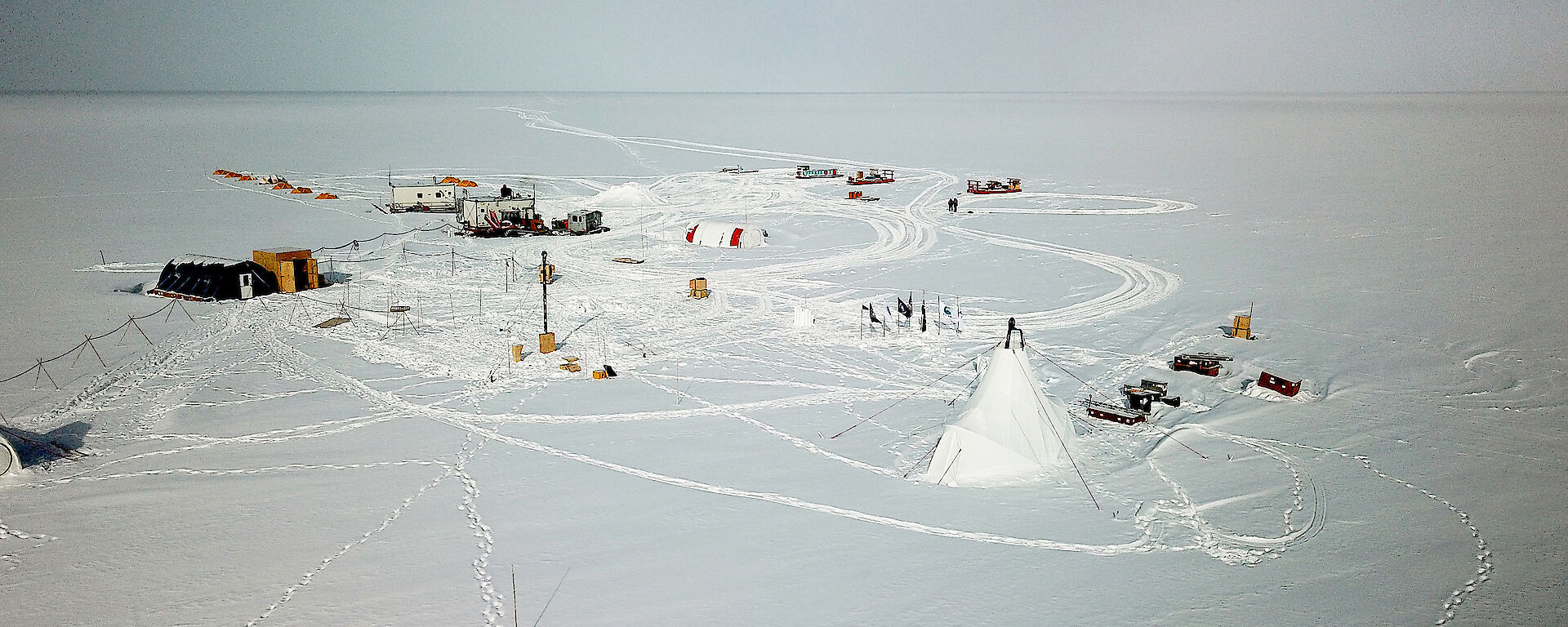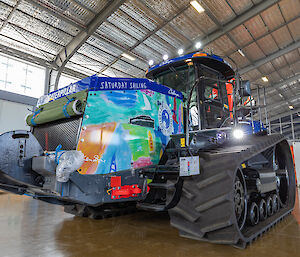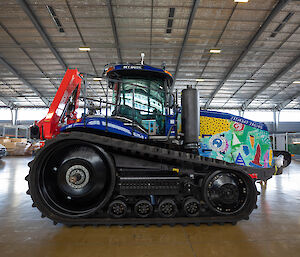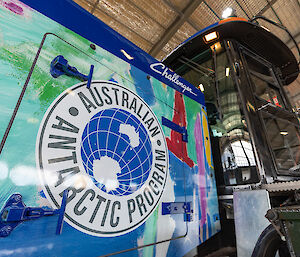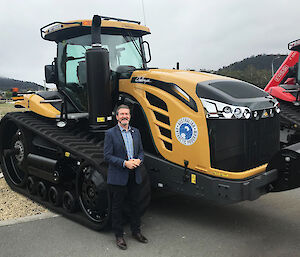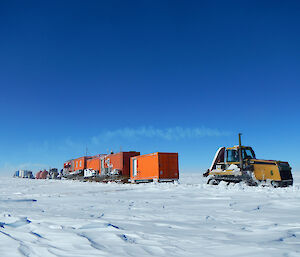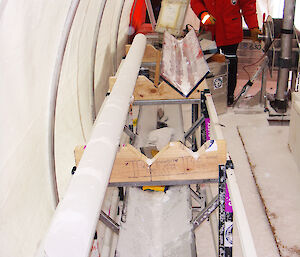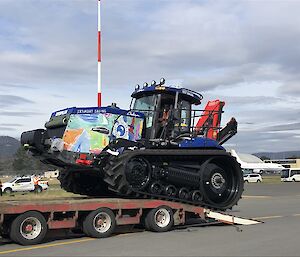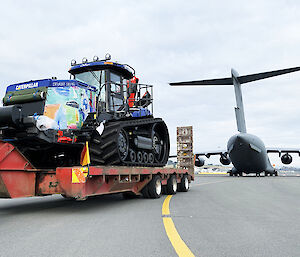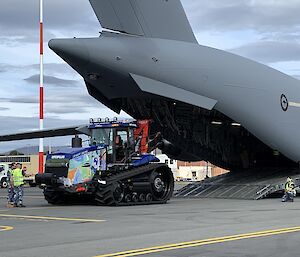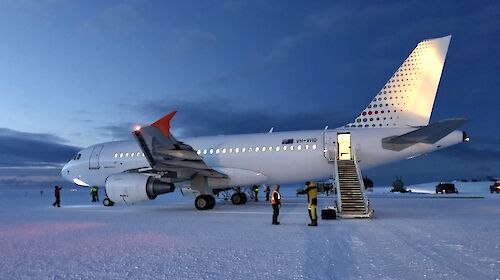The designs of iconic Australian artist Ken Done will adorn a new fleet of Antarctic tractors destined to travel across the icy continent on a quest to find million year old ice.
The first of five tractors will be loaded onto a Royal Australian Air Force (RAAF) C17A Globemaster plane in Hobart today, to fly south to Australia’s glacial runway, Wilkins Aerodrome.
Director of the Australian Antarctic Division, Kim Ellis, said Ken Done’s colourful art works on the side of the tractor bonnets embody the Australian spirit.
“The vibrant designs capture iconic Australian scenes such as the beach, reef, gum trees and outback,” Mr Ellis said.
“This imagery will provide a much needed sensory stimulus and slice of home to the Australian expeditioners, as they travel through an entirely white and stark landscape.”
The tractors will lead a traverse train, including three snow groomers and sleds carrying supplies, accommodation and scientific facilities.
The first trip will be a 1200 kilometre journey inland to little Dome C, to support scientists drilling for an ice core dating back more than a million years.
“At the deep field sites there are often multiple countries working on the one project, with similar tractors and equipment.
“Having individually designed vehicles will mean the Australians stand out from the crowd and provide a colourful morale boost during months of isolation.”
Artist Ken Done, who donated the designs, said he’s thrilled to be involved in the project.
“Never in your wildest imagination would you think that some of your paintings would end up on Australian Antarctic Program tractors — how amazing!” said Mr Done.
It’s taken six months to modify the tractors for the harsh Antarctic conditions, with the installation of double-glazed windows, heaters on the engines to cope with the expected minus fifty degree temperatures and bonnets designed to keep the snow out.
All the machinery will be flown to Antarctica in the RAAF C-17A Globemaster over the following months and the traverse fleet will depart from Australia’s Casey research station in January 2021.
The project is part of a $45 million Australian Government commitment to re-establish an overland traverse capability in Antarctica.

